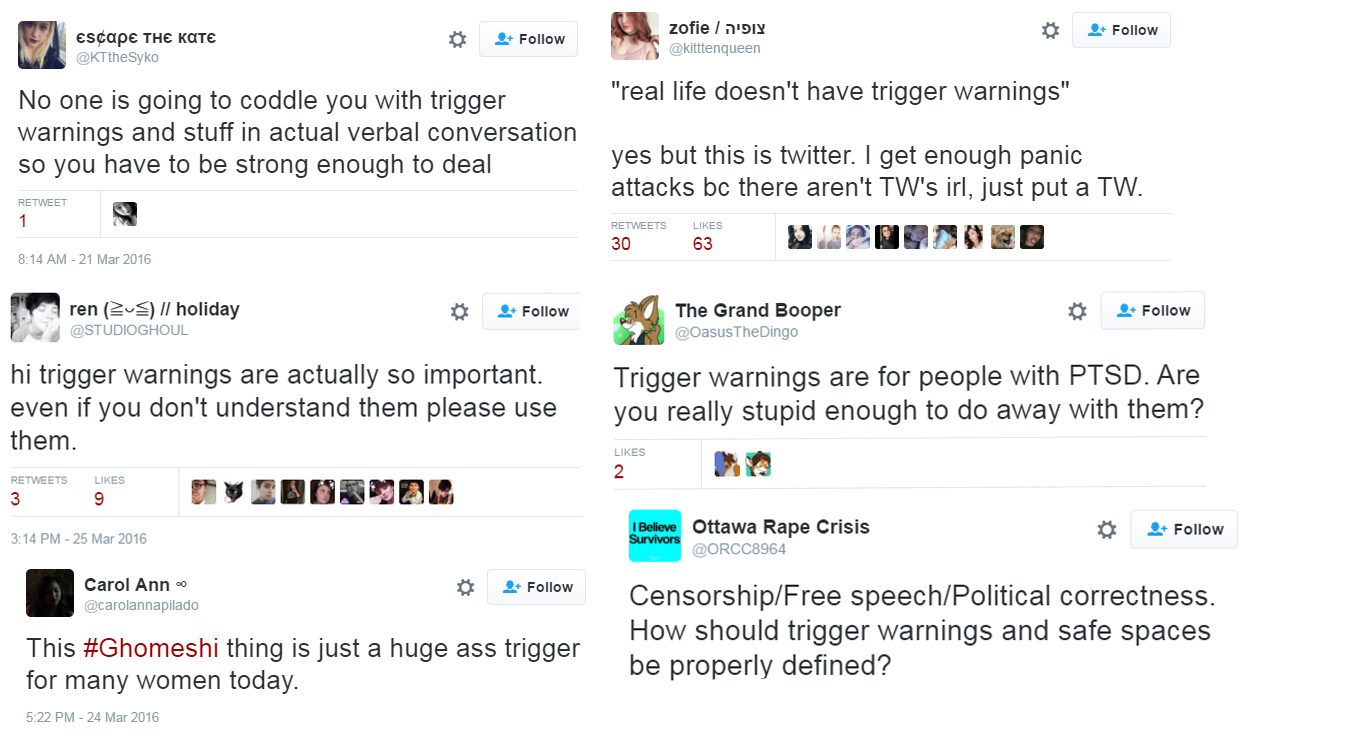Trigger Warning: the following blog post contains detailed information about sexual assault and/or violence which may be triggering to survivors.
Over the last few years, Trigger Warnings have been increasingly used on blogs and social media content to warn victims of violence in order to prevent re-victimization, PTSD episodes or other negative reactions. The practice has gained popularity on social media where you will see tweets denoted by TW. Also, community groups and survivors have asked for news and organizations to more readily adopt this practice.
Out of respect, it seems simple enough to comply with but little has been studied about the effects of trigger warnings. Some studies show that Trigger Warnings don’t necessarily work. In fact, some studies indicate it may be counterproductive (McNally, 2014). Are trigger warnings turning people off of important conversations? This brings me to an example in the news this week:
 Jian Ghomeshi used to be a star television and radio host in Canada. In 2014, he was fired from his job as a national news reporter after being charged with four counts of sexual assault and one count of choking, related to three different women. This all happened around the same time accusations about Bill Cosby drugging and raping women came to light.
Jian Ghomeshi used to be a star television and radio host in Canada. In 2014, he was fired from his job as a national news reporter after being charged with four counts of sexual assault and one count of choking, related to three different women. This all happened around the same time accusations about Bill Cosby drugging and raping women came to light.
The victims, who were mostly young news interns, came forward accusing Ghomeshi of using his status to lure them to his apartment, where he allegedly assaulted them, forced them to comply with fetishes and recorded the acts using a hidden camera. The media reported widely on the intimate details of the sexual encounters, acts, personal emails and text messages. The community in turn, praised the women for braving the exposure in order to report these crimes.
This week, Ghomeshi’s trial came to an end. The judge found him not guilty and declared the women to be dishonest and deceptive, claiming there was some reasonable doubt.
Social media however, erupted with the hashtag #WeBelieveWomen and rallies ensued across Canada.
I work for a police service and we deal with these types of sensitive topics on a daily basis so it’s important for us to be sensitive to the needs of victims and understand community requests for TWs, so I watched to see how TWs would be used/reacted to this week. Some media used them in their reporting but most did not. It seems there is still a divide.
 One sexual assault survivor Zerbisias, wrote an article (2016) where she said “feminism is not about hiding in virtual “safe spaces” while the real work of achieving equality remains to be done. It’s about organizing, getting out into the streets and fighting back…. continue the fight for equality so that we can make the laws, fill the judges’ benches, sit in cabinets, get a say about where tax dollars go and who gets to spend them. But that will never happen until we pull the trigger on trigger warnings and face the enemy head-on. Because all we’re doing right now is firing blanks at each other.”
One sexual assault survivor Zerbisias, wrote an article (2016) where she said “feminism is not about hiding in virtual “safe spaces” while the real work of achieving equality remains to be done. It’s about organizing, getting out into the streets and fighting back…. continue the fight for equality so that we can make the laws, fill the judges’ benches, sit in cabinets, get a say about where tax dollars go and who gets to spend them. But that will never happen until we pull the trigger on trigger warnings and face the enemy head-on. Because all we’re doing right now is firing blanks at each other.”
Things like these seem hard to keep up with. With all the open dialogue about sexual assault, believing victims, and lack of reporting to police, the jury is still out on Trigger Warnings.
References
McNally (2014) Hazards Ahead: The problem with trigger warnings, according to research. Retrieved from http://www.psmag.com/health-and-behavior/hazards-ahead-problem-trigger-warnings-according-research-81946
Zerbisias (2016) MEMO TO MY SOB-SISTER FOURTH-WAVE FEMINISTS: GET OVER IT, Retrieved from https://nowtoronto.com/news/memo-to-my-sob-sister-fourth-wave-feminists-get-over-it/


2 Responses to #TW: The Jury is Out